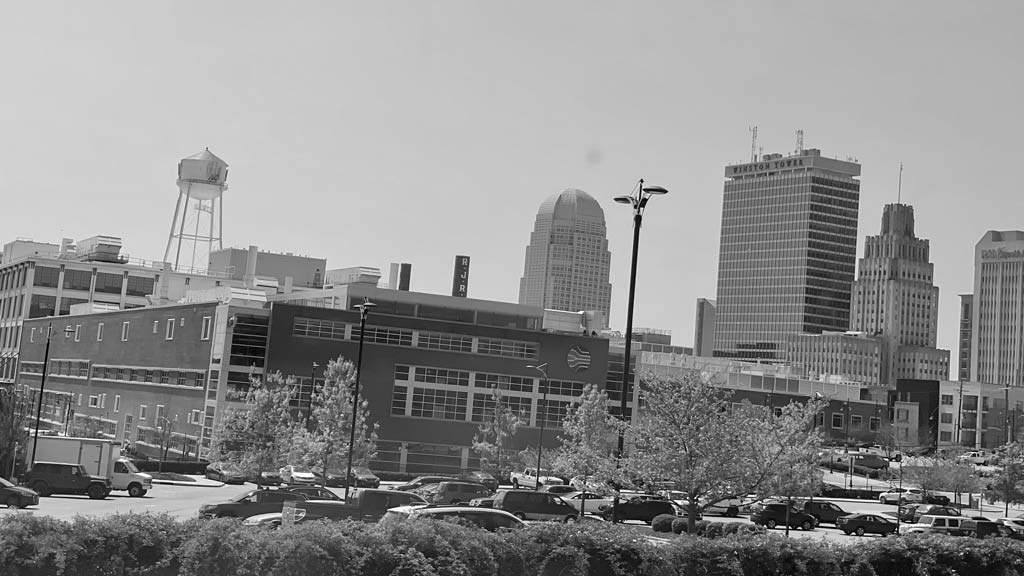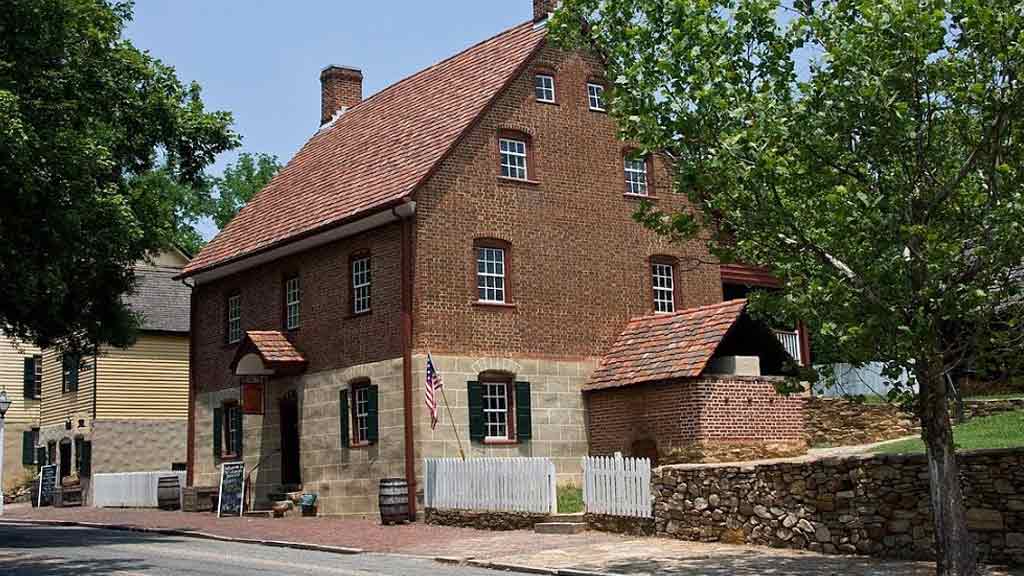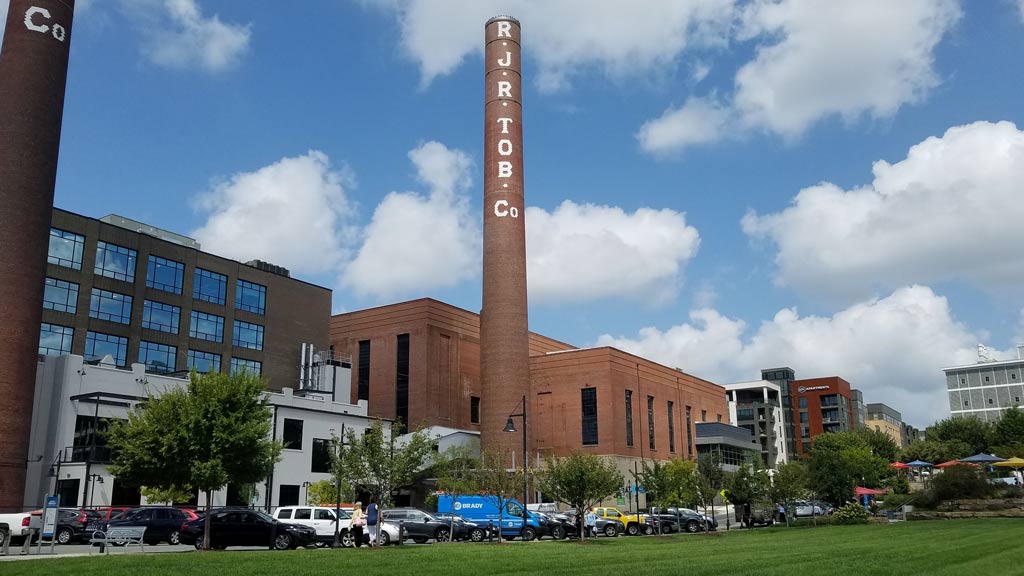Are you curious about the rich history of Winston-Salem, NC? This vibrant city, born from humble beginnings as a congregation town, has transformed into a bustling industrial hub over the years.
From the early days of tobacco production to the rise of major industries, Winston-Salem has a story worth exploring.
As you delve into the history of this city, you’ll uncover the seeds of industry that sprouted from the merger of Winston and Salem. Discover how Shamrock Knitting Mills played a vital role in shaping Winston-Salem’s growth and development.
With historic districts like Washington Park and attractions like Reynolda Gardens, Winston-Salem offers a blend of tradition and innovation that continues to captivate visitors and residents alike.
Explore the fascinating past of Winston-Salem, where the echoes of the city’s industrial roots still resonate today. From the Science Center to the Winston-Salem Fairgrounds, each corner holds a piece of history waiting to be uncovered.
Early History of Winston-Salem
The early history of Winston-Salem is characterized by the convergence of two distinct settlements with unique origins and cultural backgrounds.
Here’s an overview:
The Moravian Settlement
In 1753, the Moravians, a devoted religious group from Eastern Europe, migrated to the fertile shores of North Carolina, eventually founding the settlement of Salem in 1766.
Renowned for their craftsmanship in furniture, ironworks, and more, the Moravians established Salem as a hub of innovation and culture.
Their expertise in various trades propelled Salem to become a prominent trading center, shaping its identity as a thriving cultural and artistic core in the colony.
Salem and Winston: A Tale of Two Towns
The town of Salem, originating in 1753, was strategically located by Bishop August Gottlieb Spangenberg in the three forks of Muddy Creek.
Referred to as die Wachau, the area was named after Count Nicolaus Ludwig von Zinzendorf’s estate in Europe, marking the inception of what would become Salem.
Over time, as Salem and the neighboring town of Winston progressed separately yet intertwined, their histories intertwined, leading to the eventual merger of the two towns into Winston-Salem, a city rich in cultural heritage and industrial prowess.
The Merger and Growth of Winston-Salem
The merger and growth of Winston-Salem played a pivotal role in shaping the city’s modern identity.
Here’s a closer look:
Economic Foundations and Early Industries

As the railroad expanded into North Carolina, a fierce competition arose among major tobacco companies. Richard Joshua Reynolds had chosen Winston as the headquarters for his tobacco business, RJ Reynolds.
The Reynolds family and their employees played a crucial part in shaping the city. By the 1940s, over 60% of the city’s residents worked for Reynolds or the Hanes textile factories, which also had a significant presence in Winston-Salem.
Around this period, Winston-Salem was officially recognized as a port of entry into the United States, despite being located more than 200 miles inland.
This designation was primarily due to the massive imports of French cigarette paper and Turkish tobacco by RJ Reynolds, making the city the nation’s eighth-largest import-export center.
The convergence of industrial giants like Reynolds and the thriving textile industry laid the foundation for the city’s economic growth and prosperity.
The Role of Tobacco and Textiles
Tobacco and textiles were the cornerstone industries that fueled Winston-Salem’s early growth. RJ Reynolds’ innovative approach to cigarette production and marketing revolutionized the tobacco industry, establishing Winston-Salem as a major player in the sector.
The city’s strategic location, coupled with Reynolds’ business acumen, propelled it to national significance in tobacco manufacturing.
Simultaneously, the textile industry, led by the Hanes family, thrived in Winston-Salem. Hanes factories emerged as prominent employers, further solidifying the city’s industrial prowess.
The synergy between the tobacco and textile sectors laid the groundwork for Winston-Salem’s economic prosperity, setting the stage for its evolution into a thriving metropolis blending tradition with industrial innovation.
By harnessing the synergies of these key industries, Winston-Salem solidified its position as a hub of economic growth and industrial development in North Carolina.
The convergence of tobacco and textiles not only defined the city’s early economic landscape but also shaped its cultural identity, paving the way for a storied history of industrial achievements and entrepreneurial spirit.
Cultural and Architectural Heritage
The cultural and architectural heritage of Salem, Massachusetts, is rich and diverse, encompassing its colonial history, maritime legacy, and association with the Salem Witch Trials.
Here’s an overview:
Historic Sites and Landmarks

In Winston-Salem, NC, the preservation of historic sites and landmarks plays a crucial role in honoring the city’s rich heritage.
The Old Salem Historic District, spanning 87 acres, stands as a testament to the meticulous records maintained by the Moravian Church.
Many of the buildings within the district are original structures, providing a glimpse into the past and the lives of early settlers. Private residences still occupy some of these historical homes, maintaining the authenticity and charm of the area.
The city’s landscape bears the influence of the RJ Reynolds Tobacco Company, a prominent figure in Winston-Salem’s history.
Countless landmarks and locations are tied to the Reynolds family’s legacy, such as Reynolda Road and the Reynolds Building.
Despite the company’s significant impact on the city, Winston-Salem has diversified its industries over the years, expanding into beer brewing, textile manufacturing, technology, and finance.
This diversification has not only enriched the city’s economic landscape but also added layers to its cultural tapestry.
Influence of Moravian Architecture
One of the most iconic aspects of Winston-Salem’s architectural heritage is the Moravian Star. This symbol, deeply rooted in Moravian history, continues to shine bright in the cityscape.
The town originally known as Salem was meticulously planned by the Moravian settlers, evident in the layout of streets, buildings, and historic sites that still stand today.
The Moravian influence is evident in the architectural styles of churches, houses, and structures throughout Winston-Salem, reflecting a blend of tradition and innovation that defines the city’s character.
As you explore Winston-Salem, you’ll discover a city where history and modernity coexist harmoniously, where the past is celebrated through its architectural treasures and landmarks.
The Moravian heritage, the industrial legacy of companies like RJ Reynolds, and the city’s continuous evolution all contribute to the unique cultural tapestry that makes Winston-Salem a truly distinctive destination.
Winston-Salem in the 20th Century
Winston-Salem, located in North Carolina, experienced significant growth and development throughout the 20th century, evolving from a prominent tobacco and textile manufacturing hub to a diversified economy with a focus on healthcare, education, and technology.
Here’s an overview of Winston-Salem’s trajectory during this period:
Civil Rights and Urban Development

In the 20th century, Winston-Salem, NC, witnessed significant strides in civil rights and urban development.
The city played a role in the civil rights movement, with local activists advocating for equality and justice. Notably, Winston-Salem saw progress in desegregation efforts, paving the way for a more inclusive community.
Urban development also flourished during this period, showcasing the city’s commitment to growth and modernization. Infrastructure projects and renovations transformed the cityscape, enhancing accessibility and creating new opportunities for residents.
The evolution of Winston-Salem’s urban landscape reflected a progressive outlook, marking an era of change and renewal.
Economic Diversification
Amidst the cultural and architectural richness, Winston-Salem embraced economic diversification in the 20th century.
The city’s reliance on traditional industries, such as tobacco and textiles, saw a shift towards a more diversified economic landscape. New sectors emerged, contributing to the city’s economic growth and resilience.
Entrepreneurial spirit thrived as innovative businesses found their place in Winston-Salem’s evolving economy. The expansion of industries beyond tobacco and textiles signified a strategic move towards sustainability and adaptability.
Economic diversification became a cornerstone of Winston-Salem’s development, securing its position as a dynamic and forward-thinking city in North Carolina.
Modern Winston-Salem
Building on its rich history, Modern Winston-Salem continues to thrive as a vibrant city that seamlessly integrates its past with a progressive outlook.
The city’s commitment to innovation and creativity has solidified its reputation as a hub of arts and technology, attracting visitors and residents alike.
With a diverse range of cultural attractions and dynamic business opportunities, Winston-Salem offers a blend of historical charm and modern amenities that cater to the interests and needs of a wide range of individuals.
The City of Arts and Innovation
Winston-Salem’s title as the City of Arts and Innovation is well-deserved. Its pioneering spirit is evident in the establishment of the first arts council in the United States in 1949.
The city boasts numerous local art schools and attractions that further fuel its creative energy. From art galleries to theaters, Winston-Salem provides a platform for artists to showcase their talents and for innovators to push boundaries.
Preservation of Heritage
While embracing modernity, Winston-Salem remains dedicated to preserving its heritage. Walking through the city, you’ll encounter relics of the past at every turn, offering a glimpse into its storied history.
The Moravian settlers’ legacy is honored, allowing you to step back in time and experience the foundations on which the city was built.
Economic Growth and Innovation
Today, Winston-Salem stands as the fifth-largest city in North Carolina, boasting a thriving commercial and industrial landscape.
Its reputation as a center for arts, culture, and innovation continues to draw businesses and entrepreneurs looking to be part of a dynamic community.
From tech startups to established corporations, the city provides a fertile ground for growth and collaboration.
Sustainable Development
In line with its progressive ethos, Winston-Salem is actively pursuing sustainable development initiatives. The city’s commitment to environmental stewardship and social responsibility is evident in its urban planning efforts.
By prioritizing green spaces, renewable energy, and community engagement, Winston-Salem is shaping a future that balances growth with conservation.
Cultural Diversity and Inclusivity
Diversity is at the heart of Winston-Salem’s cultural landscape. The city celebrates its multicultural heritage through events, festivals, and community programs that bring people together.
By embracing inclusivity, Winston-Salem fosters a sense of belonging for all residents, creating a vibrant tapestry of traditions and perspectives.
This diverse cultural tapestry has been woven into the very fabric of Winston-Salem’s rich history, shaping the city into a dynamic and inclusive community that values its residents’ backgrounds and experiences.
Frequently Asked Questions
What is the merger story behind Winston-Salem’s name?
Winston grew to three times Salem’s size by 1910, leading to their merger in 1913 as Winston-Salem. The hyphen in the name symbolizes the union of the two towns. The minor league baseball team, The Dash, draws its name from this subtle connection.
How did Salem, NC, originate?
Founded in 1772 by Frederick William von Marschall, Salem was a Moravian settlement within the Wachovia Tract. The Moravians acquired the 99,000-acre land from Lord Granville in 1753, shaping the town’s rich historical roots.
What’s the significance of Wake Forest moving to Winston-Salem?
In 1946, Wake Forest relocated 100 miles to Winston-Salem from its original location. Supported by the Z. Smith Reynolds Foundation, the new campus construction began in 1952, with doors opening in 1956.
How old are Winston-Salem and its founding settlements?
Winston, named in 1851 for Major Joseph Winston, was founded in 1849 as the county seat. Salem, laid out in 1766 by Moravian colonists, was formally incorporated in 1856, representing a blend of peace and historic significance.
Who were the original settlers of Winston-Salem?
On November 17, 1753, Moravian Brethren established the Bethabara settlement in present-day Winston-Salem. These German-speaking Protestants, also known as the Unitas Fratrum or United Brethren, arrived after a journey from Bethlehem, Pennsylvania.
Conclusion
You’ve now delved into the rich tapestry of Winston-Salem’s history, from its Moravian origins to the dynamic merger that birthed Winston-Salem.
The city’s economic prowess, shaped by industrial giants like RJ Reynolds and Hanes, has left an indelible mark on its landscape. Winston-Salem’s strategic significance as a hub for tobacco and textiles underscores its historical importance.
The preservation of its cultural and architectural treasures, intertwined with the legacy of RJ Reynolds, showcases a city that honors its past while embracing progress.
In the 20th century, Winston-Salem’s evolution towards inclusivity, sustainability, and growth laid the foundation for its thriving present.
Today, as the City of Arts and Innovation, Winston-Salem stands as a beacon of progress, blending tradition with a forward-thinking mindset to create a vibrant urban tapestry.
Jaclyn Lowe